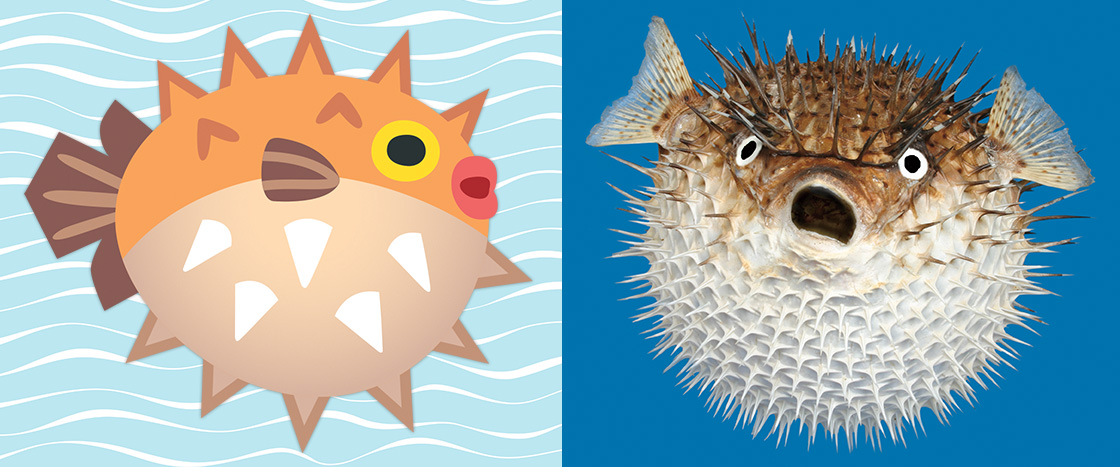Monterey Bay Aquarium (Emily Simpson)
Emily Simpson
Emily Simpson loves ocean animals—and emojis of ocean animals! But a few years ago, Emily noticed that some marine animal emojis had mistakes in them. Marine means “ocean.”

Could one person fix the mistakes in emojis of ocean animals? / What can the fixes Emily made teach us?
Students compare and contrast two short nonfiction articles.
Better Ocean Emojis
Monterey Bay Aquarium (Emily Simpson)
Emily Simpson
Emily Simpson loves ocean animals—and emojis of ocean animals! But a few years ago, Emily noticed that some marine animal emojis had mistakes in them. Marine means “ocean.”
Emoji Mistakes
left: shark before; right: shark after
Emily saw that the shark emoji was blue. Real sharks are gray.
The emoji also had only one pectoral fin. Real sharks have two pectoral fins. These are the fins on their sides.
The emoji octopus had eyes in the middle of its face. Real octopuses have an eye on each side of their face.
The emoji pufferfish was all puffed up. In real life, pufferfish puff up only when they are scared. Emily thought the pufferfish should be relaxed.
left: octopus before; right: octopus after
New Emojis!
No changes were made to the pufferfish!
Emily tweeted out the mistakes. Apple and Google, companies that design emojis, saw the tweets! The companies fixed some of the emojis.
Not all of the changes were made. The pufferfish stayed the same. But Emily feels good about the new emojis.
“Emojis can change the way we think about animals in the ocean,” Emily says. “Marine life is fascinating if we take the time to take a closer look.”
Learning From Emojis
Octopus Eyes
Emily tweeted that an octopus’s eyes are on the sides of its head. Why is that important?
Octopus eyes can see in all directions. That helps them hunt and see predators.
What’s even more fascinating? Each eye can move separately from the other. Can you move one eye in a different direction from the other?
Alex Mustard/NaturePL.com (Octopus)
eyes
Shark Fins
The old shark emoji had only one pectoral fin. But a shark would have a hard time swimming without two of these fins. The shark uses them to steer through the water.
Look at the great white shark. It must be a master swimmer to kill prey like seals. The shark usually swims under its prey. Then it swims up and attacks! It takes a big bite. Soon it has a big, juicy meal.
By Wildestanimal/Getty Images (Shark)
pectoral fins
Puffy Pufferfish
Shutterstock.com (Non-Puffy);
iStockPhoto/Getty Images (Puffed Up)
Puffed-up pufferfish;
non-puffy pufferfish (inset)
Pufferfish are excellent swimmers, but they aren’t very fast. They can’t speed away from predators. They need ways to stay safe.
When a puffer sees an enemy, it fills its stomach with water. That makes the puffer blow up like a ball. It’s now much bigger than it was. The spines on its skin also stick out.
An enemy doesn’t want to eat a big spiky ball. It swims away. Way to stay safe, pufferfish!
Implementation
Pairings and Text Connections
Before-Reading Resources
Suggested Reading Focus
Comprehension, nonfiction text features (30 minutes)
After-Reading Skills Practice
After-Reading Video
(5 minutes)